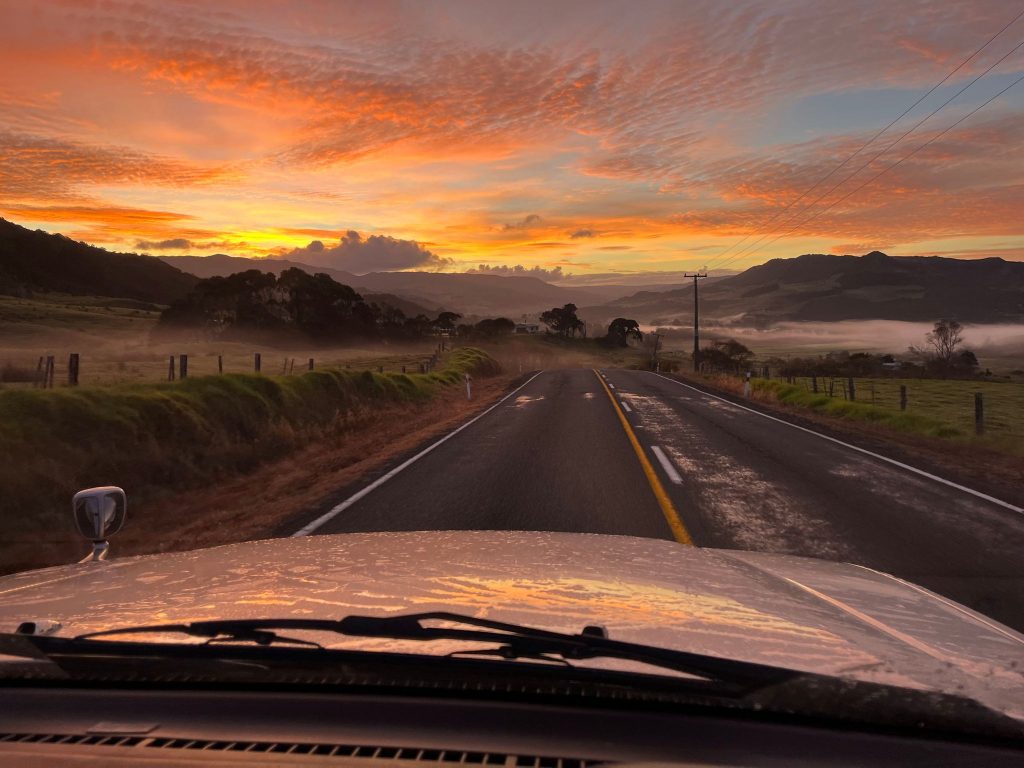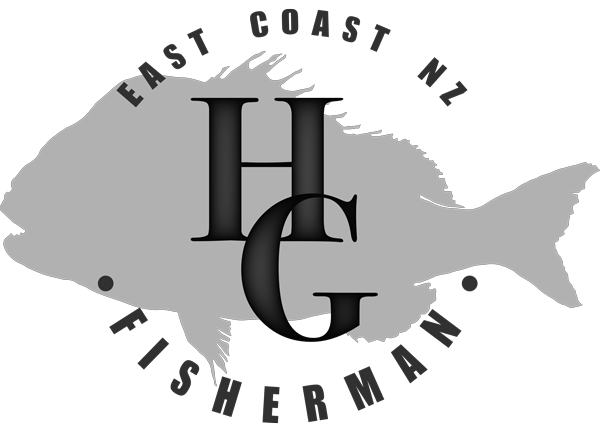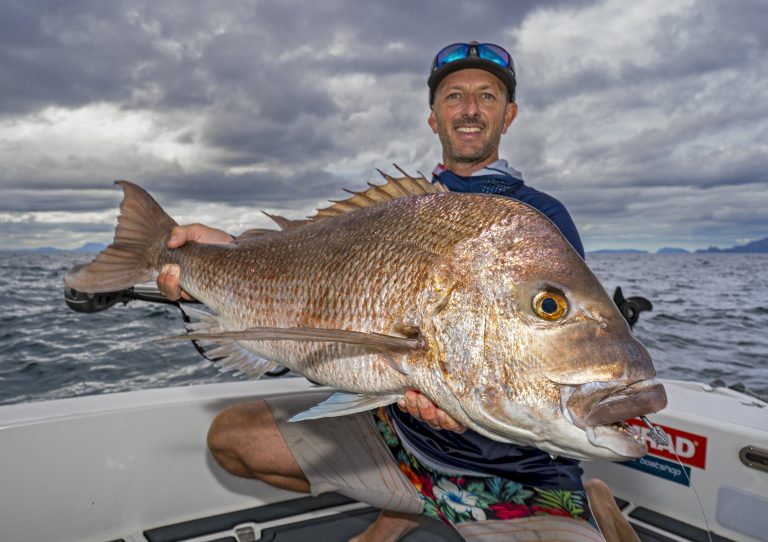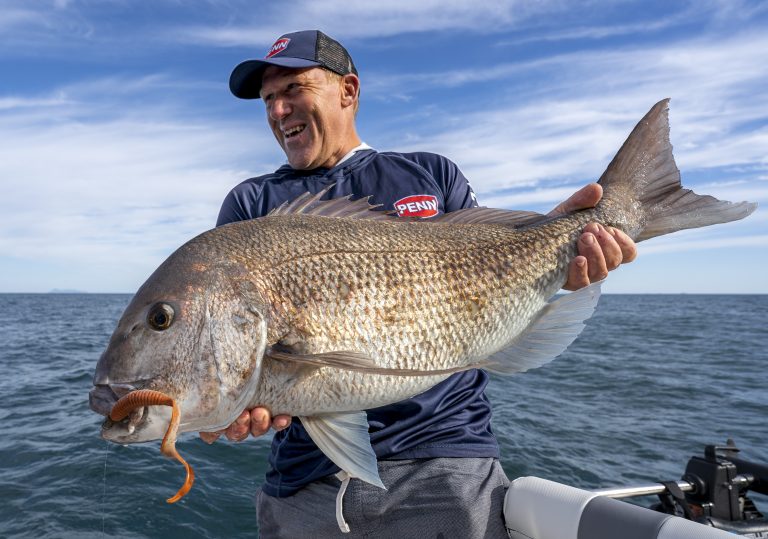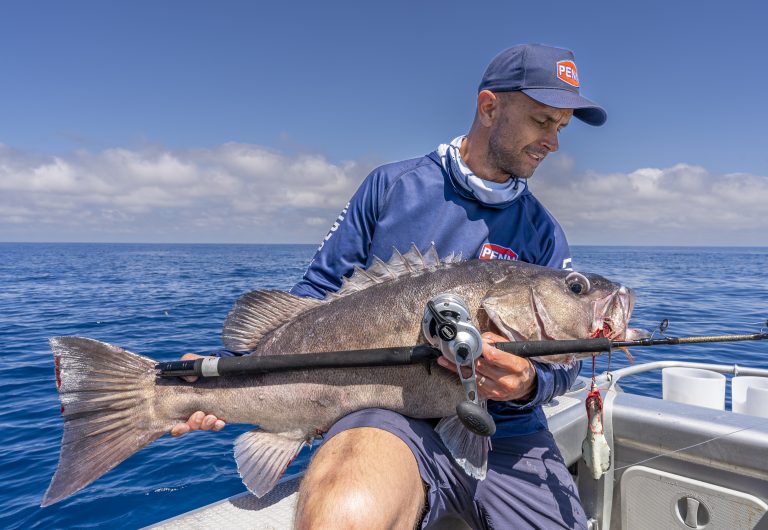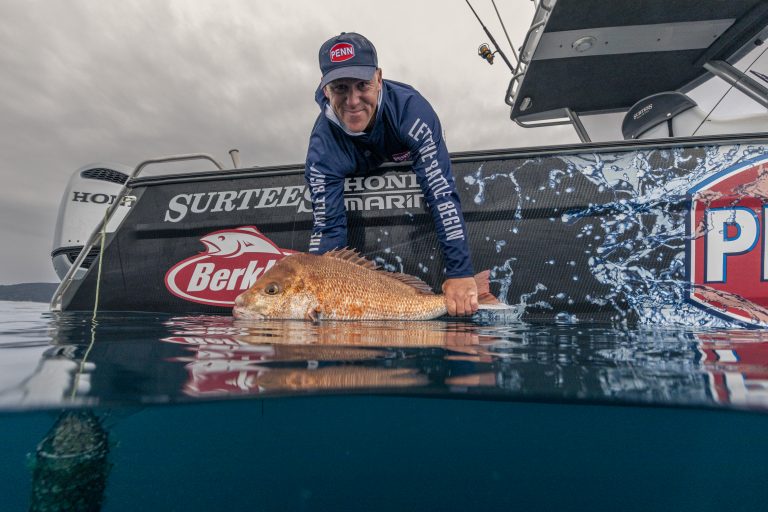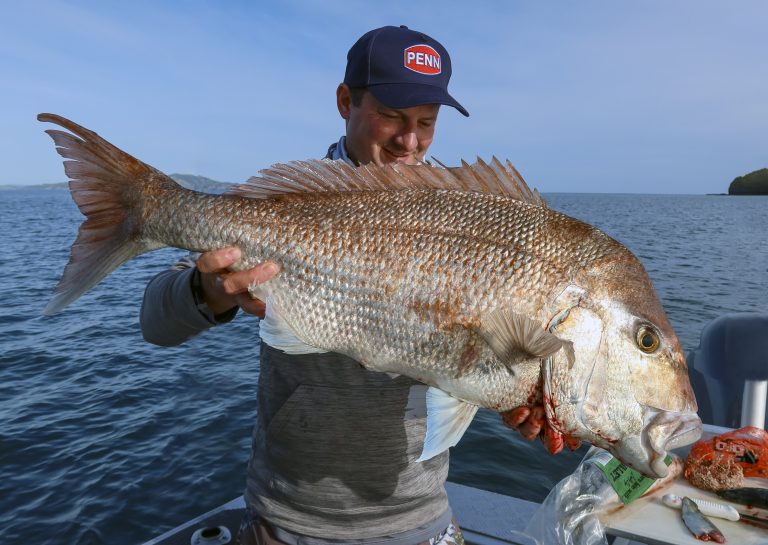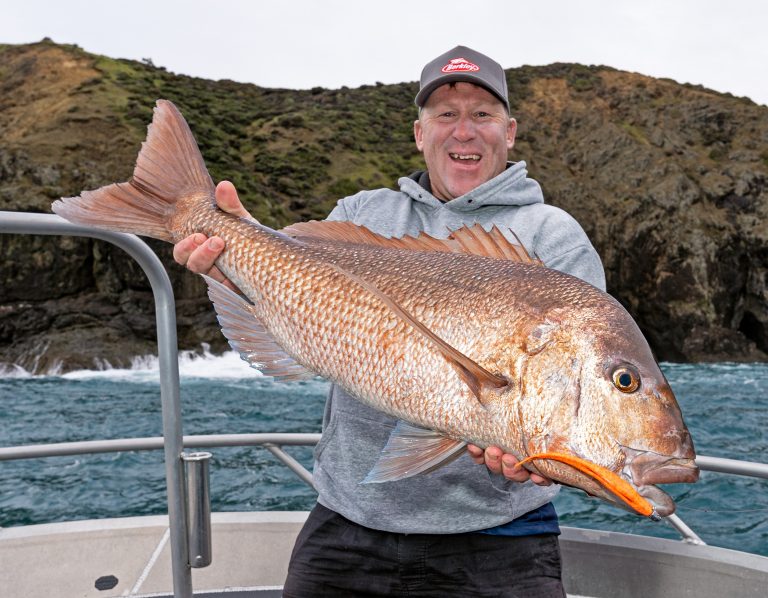Shallow water soft baiting is so addictive, that your next cast could be a 40cm or 80cm plus fish or nothing at all. At Hauraki Gulf Fishing, we try never to fish the same spots too often, and we like to mix up the areas we hit.
Autumn can present long periods of settled weather; however, this year, we seemed to have drawn bad vibes with a strong flow of easterlies that won’t let up. However, it must abate soon, and normal transmission can then resume. Until then, we have to pick our windows and go when we can.
This week presented a constant 20 knots of onshore wind and forced our hand to develop a new game plan. It had long been on my radar to fish the grounds around Hokianga, on Northland’s west coast. An area that is shallow and often has swell hitting the beach, rendering it unfishable. There are some ok bits of foul hard in on the coast, and with swell at 1 metre and easterly winds forecast, this was our best and only option. It’s always exciting fishing in an area you’ve never fished before, as you never know what to expect, and I think this draws the best out of anglers. Although I’ve fished the Hokianga for marlin and hapuku on several occasions, I’d never soft baited or snapper fished the area. Fishing with buddy Tom Harley and his daughter Paige, we knew there was foul ground on the Hoki coast, but that was the extent of our knowledge.
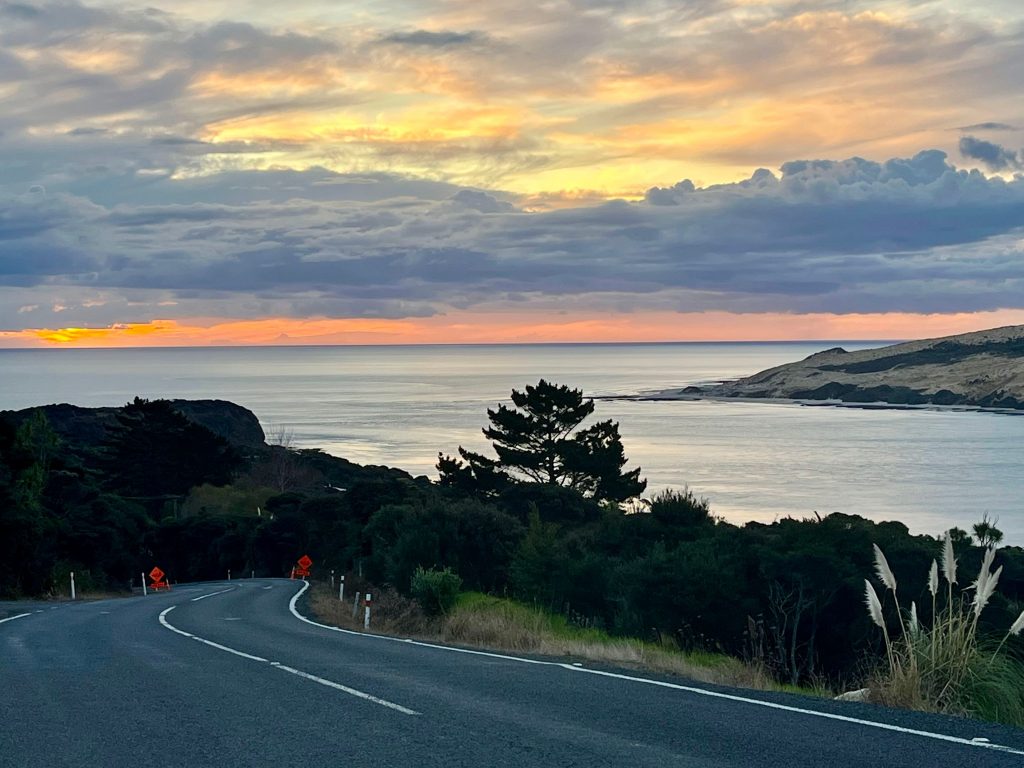
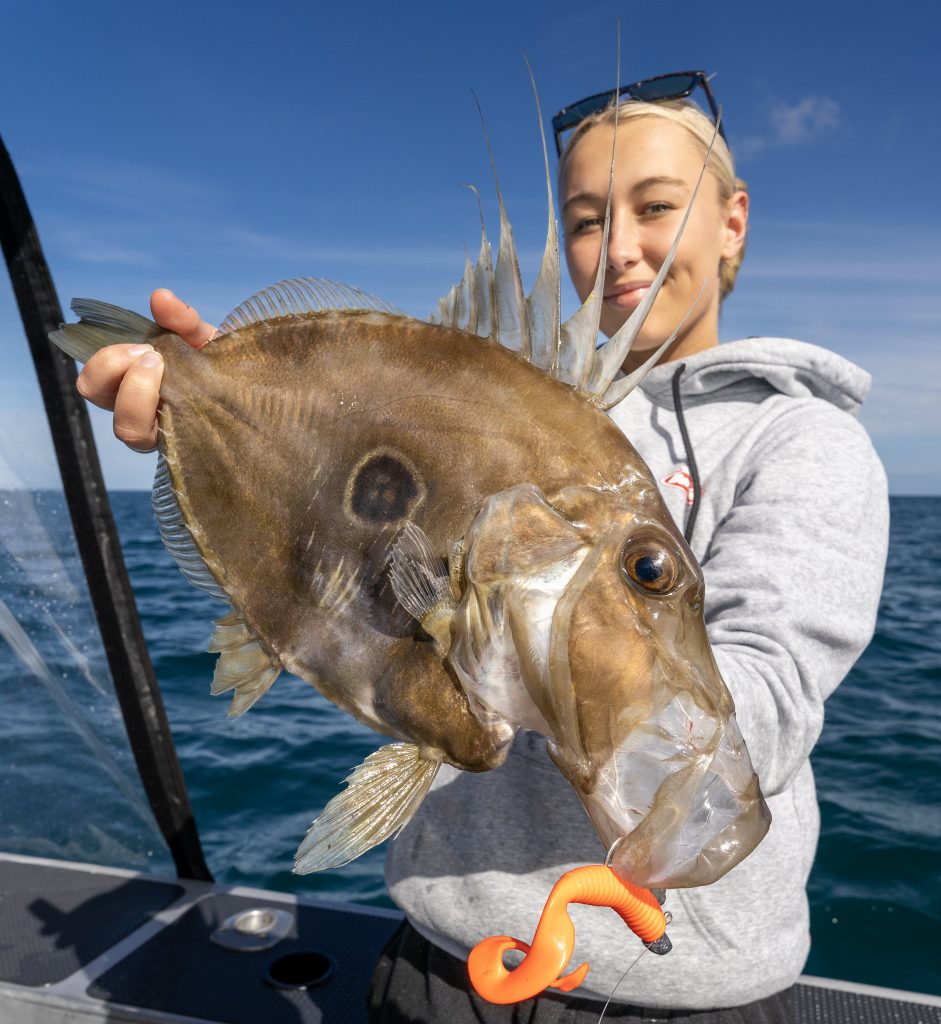
We made some assumptions that the fish would be school-style fish instead of the moochers we get on the east coast. But the possibility of an XXL school snapper foraging the shoreline was definitely on the deck.
The area was very different to the east coast, and although we found reef and rock, the actual reef systems were minimal and shallow. There were some areas where waves crashed onto the rocks that had hollowed out deep holes – hard against the coast – but the bulk of the landscape was 2-5 metres of reef then dropping to sand, with lots of scattered rocks and sand gutters. Perfect terrain! Just not enough of it.
I suspect that the area doesn’t receive much pressure due to the few fishable days the west coast allows, as the constant swell severely restricts opportunities. Even the light 1-metre swell present today was – at times – breaking on the reefs, meaning we had to be pretty careful not to get caught out by any unseen waves.
Even though the reef structures were smaller than we had hoped for, we were still salivating at the thought of casting into the fresh ground and at fish that probably hadn’t seen a lot of Gulp!.
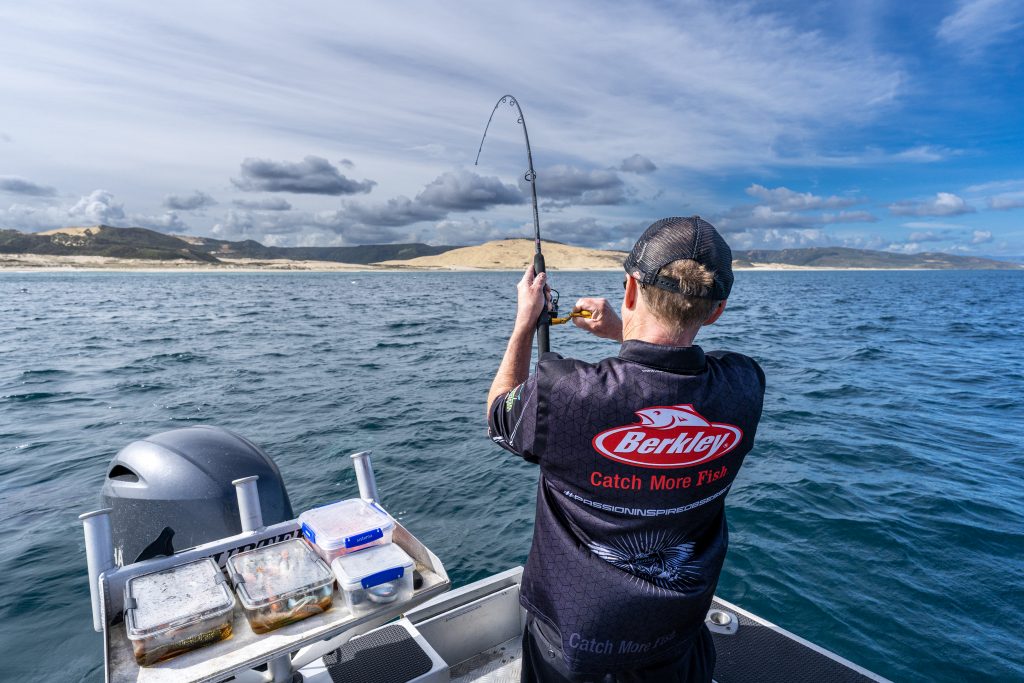
Conditions on the Hokianga Bar
Date – Monday 2nd May
High tide – 10:42am
Low tide – 4:59pm
Sunrise – 7:03am
Sunset – 5:42pm
Swell – 1 metre
Wind – 5-15 knots easterly
Moon Phase – Waxing Crescent, next full moon 16th May
Best Bite – 7:30 – 8:15am & 12-1:00pm
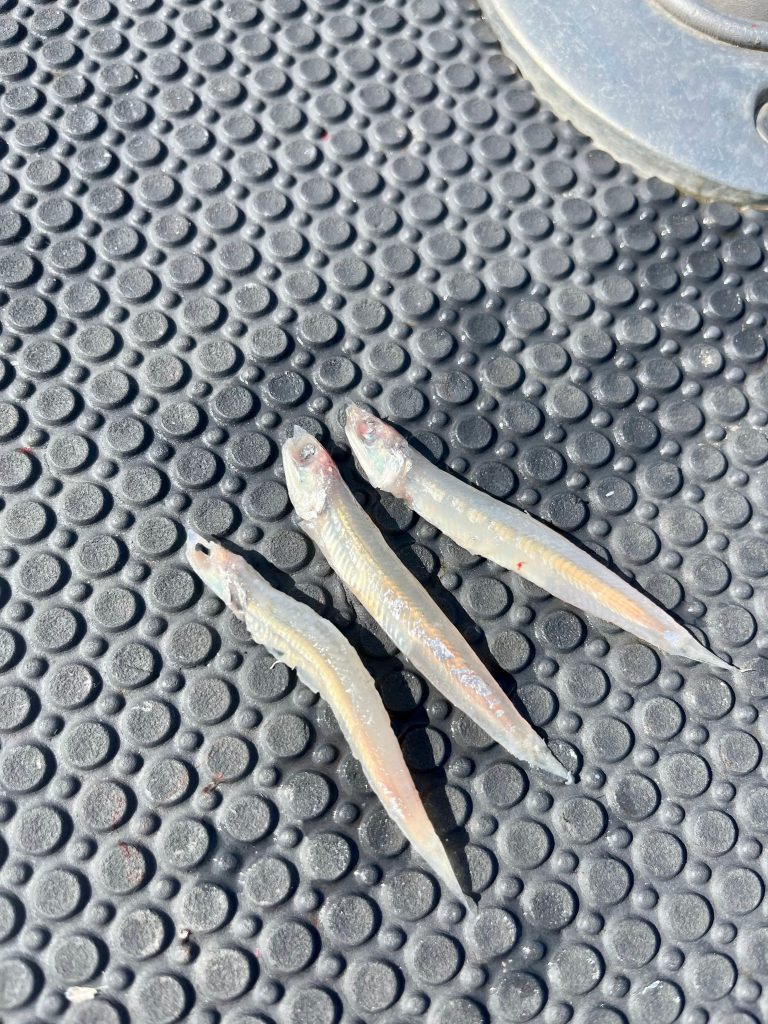
Driving along the coast in 10 metres of water, it was cool to note the abundance of life on the sounder; we marked this to check out towards the end of the day. Once arriving at the rocky coastline, fish hit our soft baits immediately, snapper in the 40cm bracket. What was immediately noticeable was the lack of reef fish and baitfish we get on the east coast. But kahawai were everywhere, darting about smacking soft baits at will. Great to see their abundance, but still an inconvenience nonetheless.
As we got into the zone, the fishing got better and better, with no lack of fish, and all the fish were an opaque pink/purple colour. Tom, an ex-commercial longliner, noted that his export fish from the west coast never received the same money as east coast fish. At that stage, most of his catch was going to the Japanese market, and they preferred the darker coloured fish of the east coast, especially spawning fish, as they have the brightest, most intense orange on them. Tom’s view is this was purely aesthetics and had nothing to do with fat content or flavour.
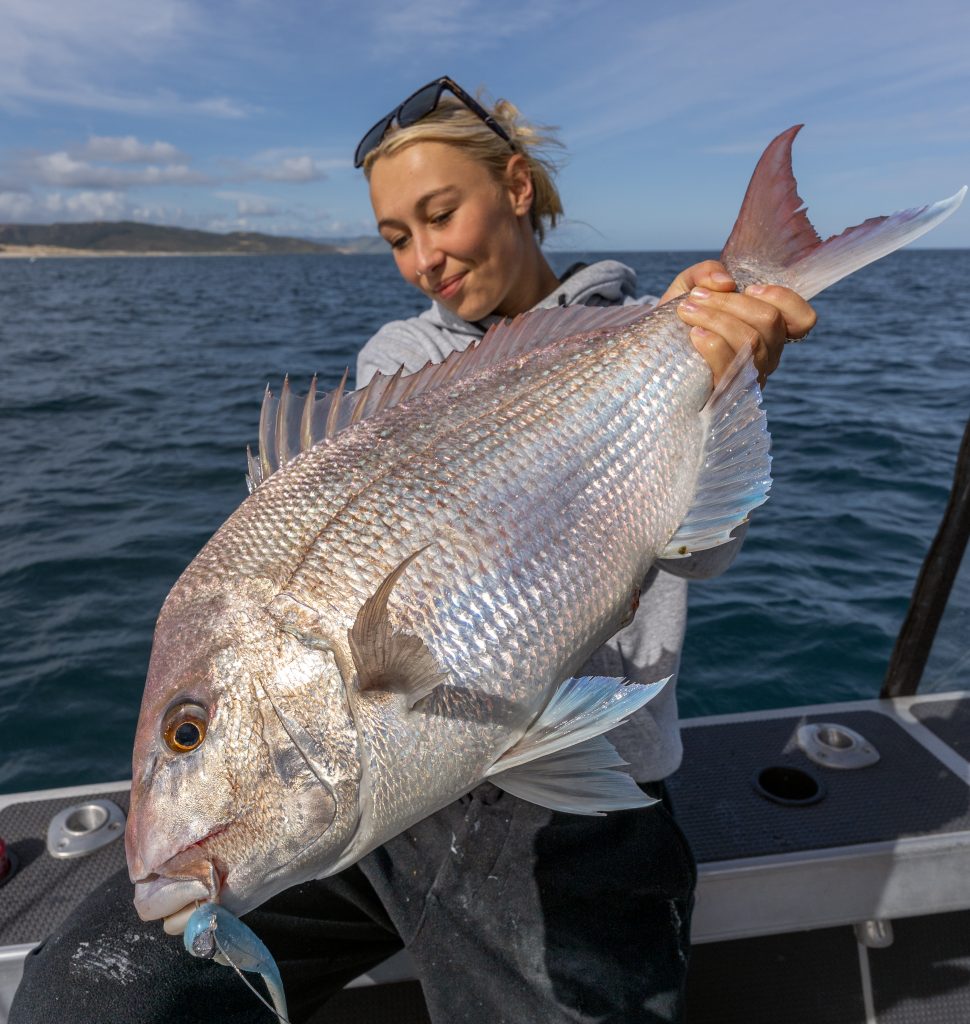
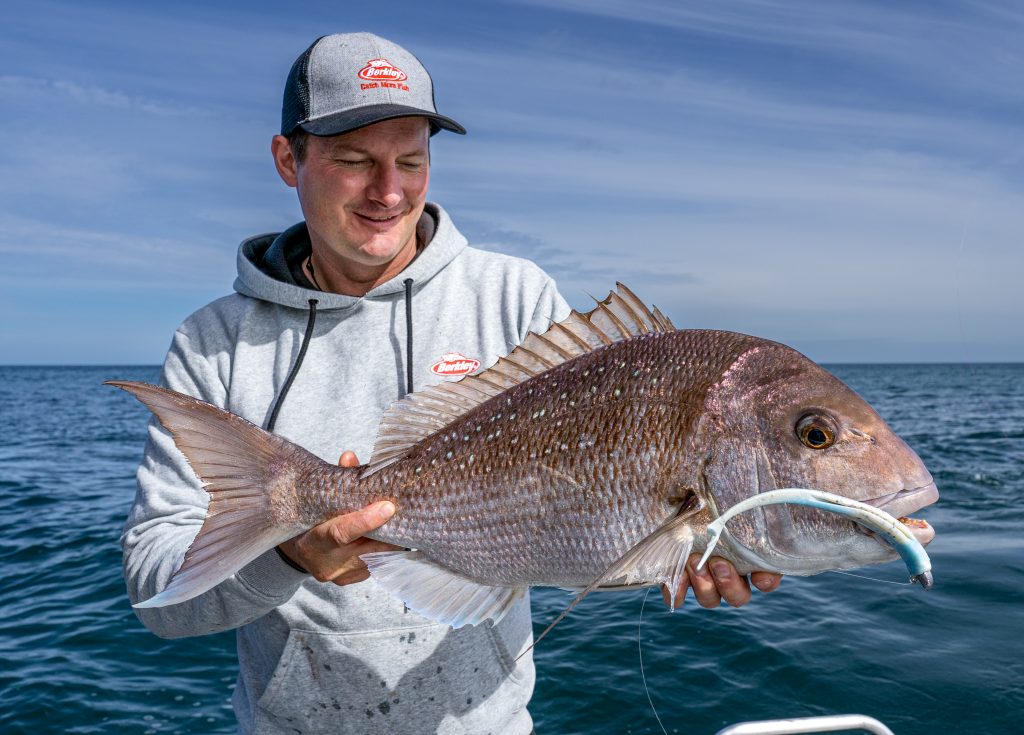
I agree with the Japanese; the orange/red snapper looks more remarkable than their white-bellied west coast brethren. Taste quality, the east coast has a little more flavour due to a more varied diet, perhaps? But much of a muchness, to be fair. Size and shape-wise, the west coast variants are heavier vs length, with them being rounder in shape and carrying more girth. But, aside from that, snapper are snapper!
The size improved with the outgoing tide, but we never captured anything over 5-6kg in weight, with a couple of by-catch John Dory thrown in. We also encountered a sporadic work-up of gannets bombing what appeared to be tiny anchovies in 10 metres of water, and this also had many snappers in the 50-60cm size range in attendance. However, we didn’t hang around this too long, as we were in search of an XXL Red Dog.
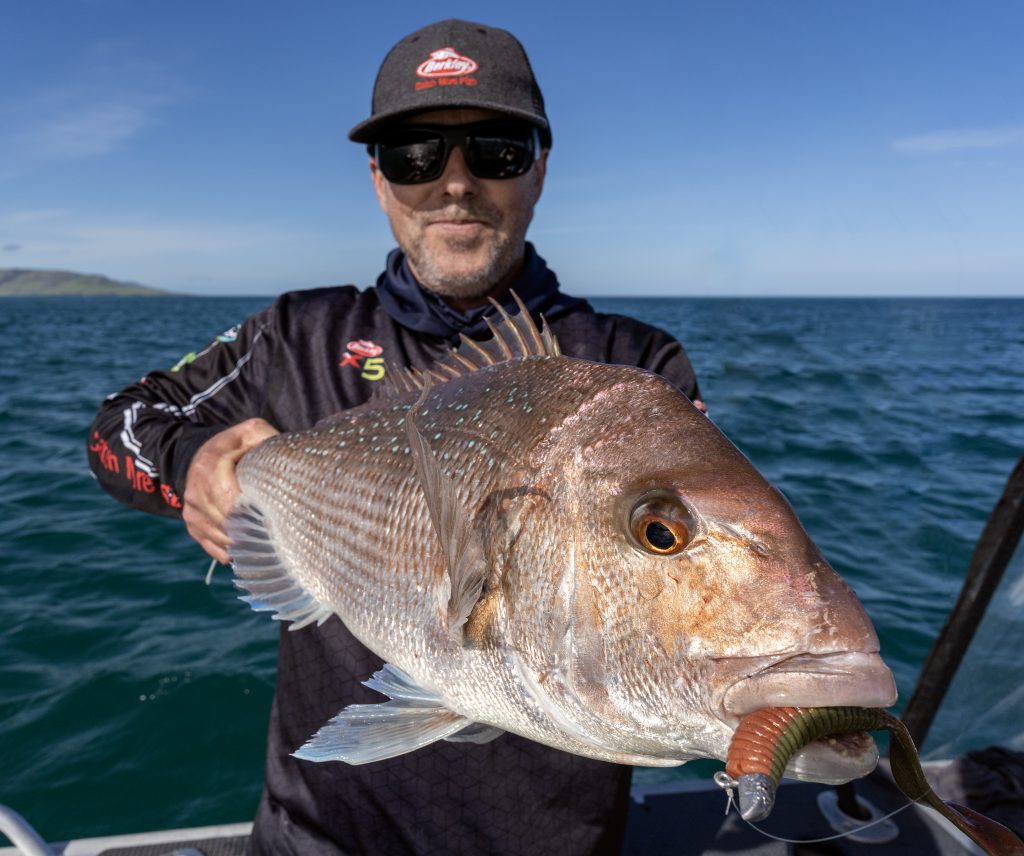
Paua being my favourite seafood, I also made sure we had time to jump over the side and try my hand; this also doubles up as understanding the terrain better and giving me more insight into what I’m fishing in. I can duly report back extreme levels of kelp, zero Kina, some parore and hiwiwi and very stirred up water with approx 1 metre of vis. After 20 mins of hunting around, I couldn’t locate any Paua; I was expecting to find many, as the ground was perfect. The search continues.
Hokianga is a fantastic destination to visit and fish but has a bar that you must approach cautiously. It’s short, shallow and powerful. Please do not attempt to cross without talking to someone with experience, and we strongly advise getting in touch with Hokianga Game Fish Club or Coast Gaurd for advice on crossing the bar. Beyond that, the fishing is outstanding, and I rate the Hoki as consistently the best coastal marlin fishing in NZ. The Hapuku fishing used to be excellent, but like most Northern NZ, it is now a fishery on the brink of collapse. Puka is still available, but it is not even a shadow of its former self. The snapper, kahawai, and trevally fishing are top-notch, with many fish available.
The Hokianga delivered on all fronts but not the XXL version we thought we might find. However, we won’t be racing back for any more shallow water soft baiting. There is ample snapper in the deeper waters, but the shallow water style that I like doesn’t offer enough ground to fish. The Hauraki Gulf provides a far superior all-around fishery for soft bait fishing.
